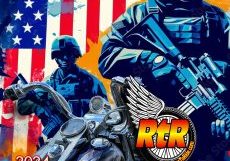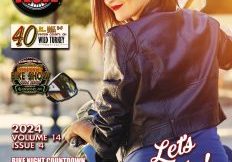Armed and Riding: A Guide to Carrying a Handgun on a Motorcycle
Motorcycles and firearms both symbolize freedom—but combining the two requires careful planning, legal awareness, and the right gear. Whether you’re cruising cross-country or commuting to work, here’s what you need to know about carrying a handgun on two wheels.
Legal Considerations
- Know Your State Laws: Laws vary widely. Some states allow open carry, others require a concealed carry permit. Always check both your home state and any states you’ll ride through.
- Permits Matter: A valid concealed carry permit is often required to legally carry on a motorcycle.
- Transport vs. Carry: If you’re not carrying on your person, your firearm may need to be unloaded and stored in a locked container, depending on local laws.
Carry Methods That Work
According to GunBroker’s guide, here are some of the most effective ways to carry:
- Shoulder Holster: Great for concealment under a jacket, but can be tricky to access quickly.
- Tank Bag or Holster: Mounted on the bike’s tank, this allows off-hand access while riding.
- Concealed Carry Jacket or Vest: Offers built-in holsters and easy concealment, especially in cooler weather.
- Thigh or Crossbody Bag: Popular for summer riding, these keep the firearm secure and accessible without printing.
Concealment Tips
- Wind Matters: At 70 mph, your shirt becomes a parachute. Consider high-riding holsters like shoulder rigs or belly bands to avoid exposure.
- Dress for the Ride: Leather jackets and armored vests double as concealment. In hot weather, opt for compression undershirts with holster pockets.
Safety First
- Retention Is Key: Your holster must keep the firearm secure during vibration, wind, and sudden stops.
- Practice Drawing: Your draw technique may need to change depending on your riding position and gear.
- Crash Considerations: Think about what happens to your firearm if you go down. Avoid hard holsters in areas likely to impact the ground.
Other Notes, courtesy of USCCA – USConcealedCarry.com
Why You Should Never Draw While Riding
If you’re right-handed, your hand is on the throttle. Drawing while moving isn’t just impractical — it’s reckless. The vast majority of defensive gun uses occur while stationary: at a stoplight, in a parking lot or at a gas station. Prepare accordingly.
Even if you could draw, aiming and firing while riding would create more risk than resolution. Responsible carriers must distinguish between cinematic fantasy and self-defense reality.
INTERESTING SIDE NOTE:
Early Indian motorcycles had their throttle on the left, and it’s often said that this was to accommodate police departments that wanted to be able to draw and shoot with their right hand. But that’s not really the case…
Early Indians had a carburetor on the left side of the engine, so in an era before standardization, it made sense to put the throttle on the same side as the carb. Then as the carb moved elsewhere in later models, the throttle also moved in some cases – but not always. Later placements became more standardized. The Military and Police did buy a lot of Indian motorcycles, however most folks don’t really advocate the idea of trying to ride and shoot at the same time. That’s really better left for cyborgs in the movies.
Off-Body Carry on a Motorcycle: Pros, Risks and Realities
Many jackets and vests feature deep inner “outlaw pockets” that accommodate a compact firearm. But once you hang your jacket over a chair at a restaurant, you’re no longer in control of your weapon.
Bags, belt packs and motorcycle gun holsters — including the Ukoala bag mentioned earlier — offer a compromise. They keep the firearm close and concealed, but not technically on-body. If you go this route, be disciplined. Keep the bag on you, zipped and worn securely with retention in mind.
If you need to stow your firearm in your saddlebags, make sure you use a motorcycle gun safe that’s lockable and not easily visible. The Bulldog Car Safe, Vaultek Slider or Console Vault offer secure, mountable options that protect against theft and weather.
Secure Storage and Legal Travel Tips
Traveling with a firearm across state lines isn’t as simple as tossing it in your saddlebag. While the Firearm Owners’ Protection Act (FOPA) allows transport through restrictive states, conditions apply:
- You must be legal to possess the firearm at both origin and destination
- The firearm must be unloaded and stored separately from ammo
- Both should be inaccessible, ideally locked in a hard container
States like California do not honor most non-resident permits. Before your trip, review the USCCA Reciprocity Map and state-specific transport laws. If you’re unsure how reciprocity works, check out this full breakdown of how concealed carry permits are recognized across state lines.
PLEASE NOTE: RtR is providing this information for your consideration ONLY and not as legal advice, nor as a recommendation that you carry a firearm while on a motorcycle or at anytime – for that matter. We do, however, strongly believe that the most important consideration when it comes to owning and carrying a firearm is proper training and knowledge in how to use, handle, carry, and story it. It’s with this in mind that we present this series.
Read More of Our Magazines
Looking for more riding inspiration, tips, and event highlights? Explore our complete collection of past Reasons to Ride magazines in our Past Issue Bookshelf. Each issue is packed with valuable content for riders, including scenic routes, gear reviews, and updates from the motorcycle community.










